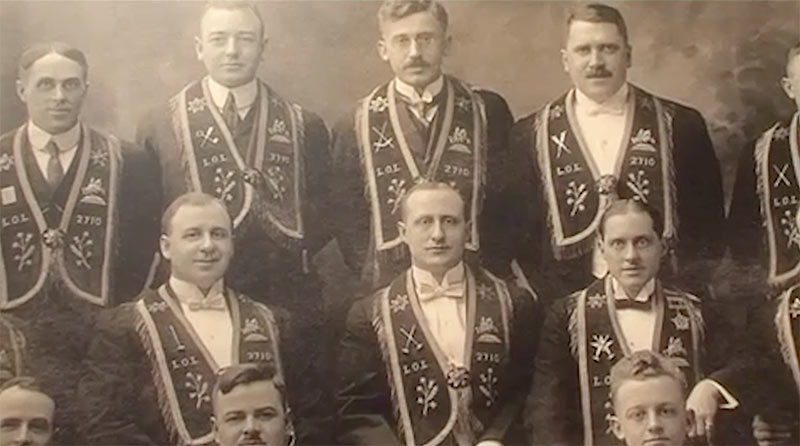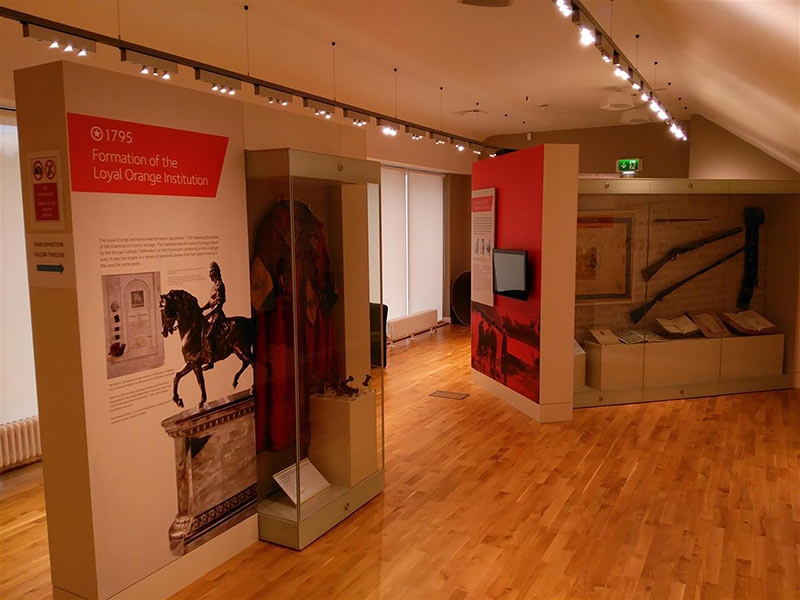Many artefacts are on display around the exhibition room and throughout the recently extended building. You can see ‘Captain Quigley’s blunderbuss’, a famously loud gun used in the Defender’s attack on the Winters’ Inn.
A decanter box owned by William Blacker is displayed too. A wealthy local landlord, lead from the roof of his mansion was used to fashion bullets for the conflict. Blacker will become the first Grandmaster of the Orange Order.
Also in evidence are roll books and minutes dating back to 1796, a bible from 1690, the year of the Battle of the Boyne, presented to the first Prime Minister of Northern Ireland, Lord Craigavon, a toasting glass used at the Siege of Derry and a military commission signed by King William in 1693.
As the Orange Order developed so did its traditions. The annual parades, seen today around the world, are documented here from their earliest incarnations and there are many different sashes and collarettes, not to mention huge Lambeg drums, a prominent, and very noisy, feature of the parades.
As Orangemen emigrated they brought their traditions with them and there are lodges throughout the world. Photographs displayed show parades in Togo, South Africa and Canada, where the Mohawk Lodge wear Mohawk headdresses as they march.
It’s a long way from the simple parlour room where a handful of men made history back in September 1795.


